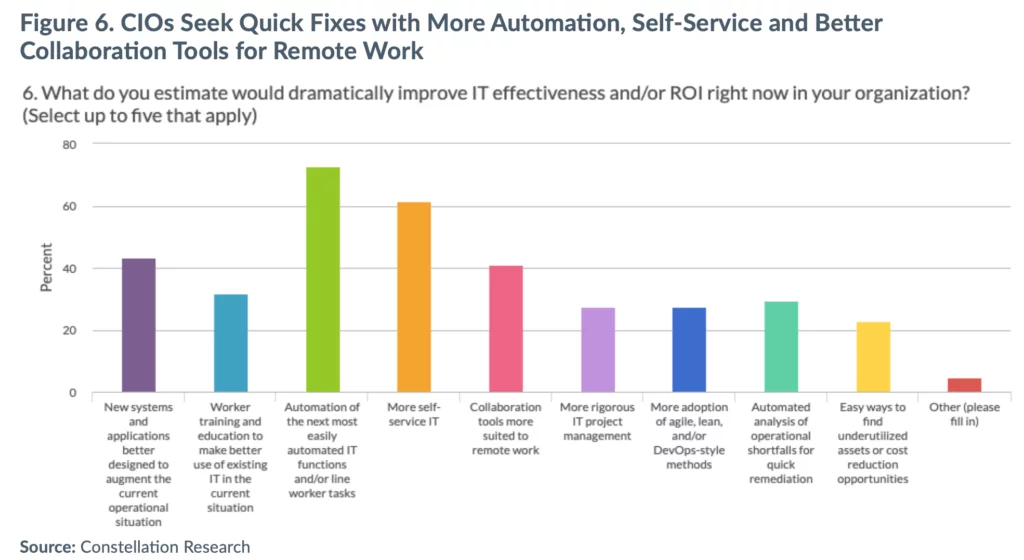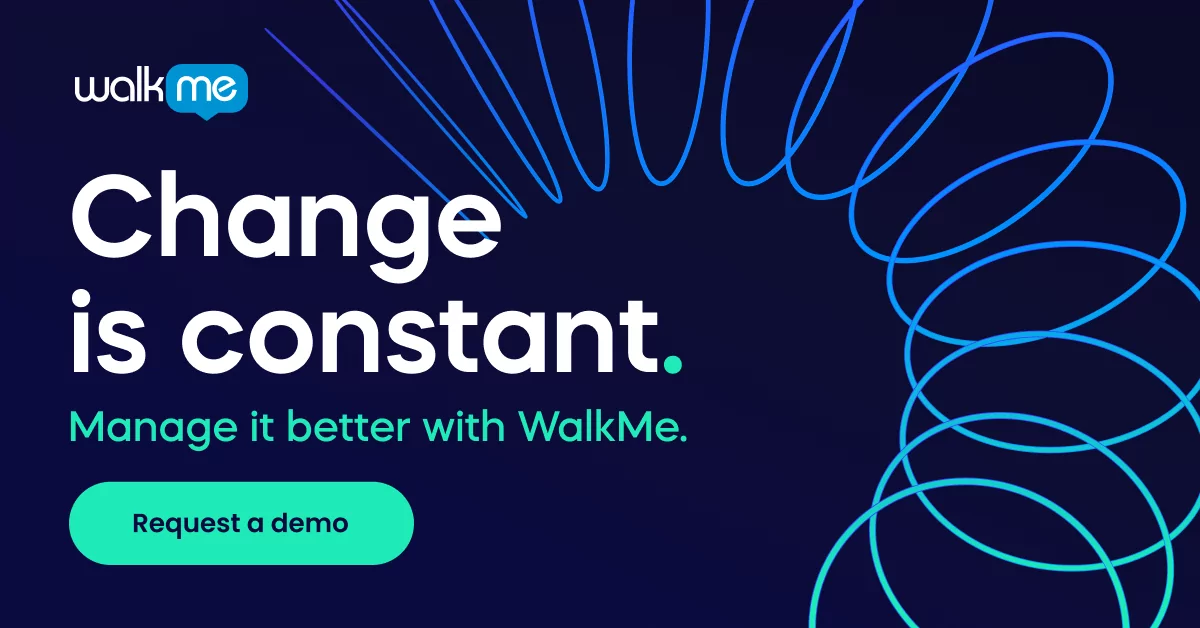For years, the CIO’s role has been evolving, and as it has changed, so have the challenges CIOs face.
In a 2013 survey by Forrester, 30% of survey respondents felt that CIOs were the most important senior leaders in driving business transformation – rated even more important than CEOs.
In the years that followed, research by other companies continued to reinforce this theme.
- A 2020 survey from Constellation Research in partnership with WalkMe found that CIOs are pivotal to future-proofing and making their organizations more resilient.
- A 2019 survey from Logicalis stated that 43% of CIOs were being measured by their contribution to revenue growth
- A 2020 survey from Constellation Research in partnership with WalkMe found that CIOs are pivotal to future-proofing and making their organizations more resilient.
- A 2019 survey from Logicalis stated that 43% of CIOs were being measured by their contribution to revenue growth
While changes such as these may be welcome for some CIOs, they also open up new challenges and obstacles.
Below, we’ll explore a few of the challenges facing the modern CIO and how to overcome them.
Key forces shaping the modern IT landscape
The PwC report cited above highlighted many of the complexities that are driving what they call “the digital divide.”
On the one hand, we have forces that increase business needs and expectations, such as increased rate of business change and growing consumerism.
On the other hand, we have forces that decrease IT responsiveness, such as the digital skills gap and outdated IT operating models.

Trends such as these are directly linked to a number of other factors that are driving transformation in the business landscape itself. PwC cites its own 20th CEO survey to indicate the biggest challenges and concerns of the c-suite, which include:
- The speed of technological change
- Changing consumer behavior
- The availability of key employee skills
- Uncertain economic growth
Matters such as these result in, among other things, the need to rethink the role of the CIO and the IT function.
CIO challenges and agenda items to prioritize in 2021
Constellation’s CIO Outlook for 2021: Business ROI at Scale, surveyed 100 Fortune 500 CIOs to better understand what CIOs are facing come 2021
Remote work According to the survey, CIOs are tasked with supplying the needed digital tools to a dispersed workforce. As 2021 approaches, hybrid offices will most likely take shape meaning a combination of employees working both from the office and at home. To navigate this new terrain CIOs will have to continue investing in the right software and to accommodate employees.
Self-service enablement Being out of the office means that employees have less immediate IT support, with CIOs citing that they will need to invest in more automation efforts and guidance for users. Using a full solution like a Digital Adoption Platform (DAP) can alleviate this challenge by automating processes, providing in-app guidance and providing analytics and visibility into where technology isn’t being properly utilized.

PwC names several important changes that must take place in order for IT to meet the changing needs of the business world:
IT must become a board agenda item. The board must take responsibility for technology governance, guide IT, and oversee critical IT functions, according to the King IV report. Organizations’ governing bodies, in other words, must take a more hands-on approach to technology, rather than relegating IT and the CIO to a back-office support function.
IT’s role must expand to adapt to the new demands placed upon it. IT’s traditional functions, such as maintaining IT systems and services, will remain. Over time, however, organizations’ expectations of and reliance on technology will increase. To keep up with those demands, CIOs must adopt operating models that are more flexible and agile.
The CIO mandate must change. As mentioned, CIOs must be willing to adapt to IT’s changing role in the workplace. Yet this is easier said than done. PwC, for instance, says that CIOs must transform from support executives to strategic business leaders, add value and business growth to their priorities, become entrepreneurial innovators, and embrace agility, among other things.
Gartner, also cited above, makes several specific recommendations that CIOs can follow in 2021:
Redirect resources. According to Gartner, the highest-performing enterprises know that “disruption isn’t the exception to the rule, it is the rule.” Despite the financial hardship caused by COVID-19, the firm’s survey showed that top performers expect to increase funding in digital innovation. They further suggest that the companies that have already increased their funding will be 2.7 times more likely to be top performers.
Remodel operations. More than half of CIOs in the Gartner survey claimed that the speed of their supply chains declined. Supply chain resilience, therefore, should become a top priority for those companies whose supply chains were disrupted. Innovative use of digital technology, Gartner says, is one way that CIOs can improve supply chain speed and resilience.
Go where customers are. Around three out of four CIOs saw customer demand shift as a result of the pandemic, and most expect that demand to increase in 2021. To keep up with “digitalizing customers,” CIOs should invest more in areas such as customer-facing technology, digital interactions and experiences, and overall customer engagement.
Focus on digital business acceleration. Gartner’s final recommendation echoes many of the sentiments covered above. Namely, many CIOs report that other business leaders are making more frequent high-value strategic requests, as opposed to tactical IT investment requests.
In an interview with WalkMe, CIO of Red Hat, Mike Kelly drew a direct line between digital transformation and strategic value for his organization. He said, “Our job as leaders is to deeply understand what our business model is, how it works, how efficient it is, and then introduce and leverage technologies, and get everybody rallied around adopting them in a way that helps mitigate any issues associated with that.”
Gartner’s suggestion: focus on organizational culture and future-proofing the workforce. Implementing changes such as these may certainly be a challenge, but Gartner also frames these shifts as an opportunity for CIOs to play a major role in accelerating digital transformation and, ultimately, adding more value to the organization.


